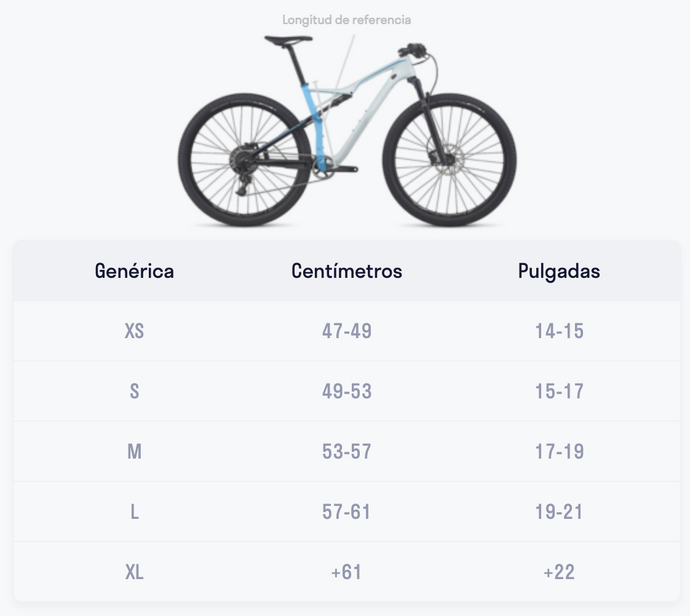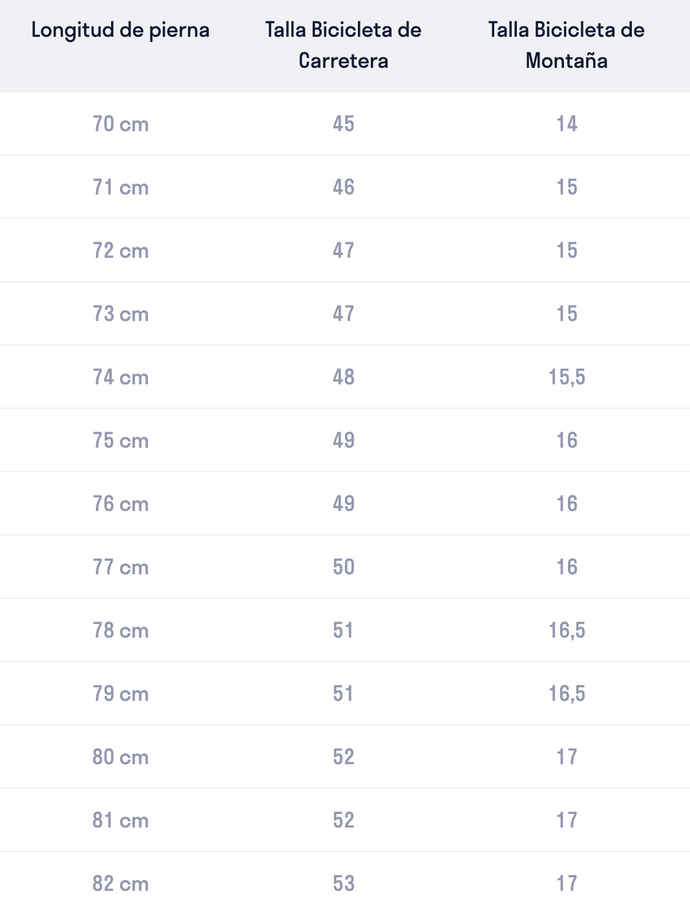Sometimes it is difficult to know what our bicycle size is, so we have made this guide so that it is easier for you to find out the bicycle size you should choose.
Two little steps to find out your size

How to choose your bicycle size?
Choosing the right size of a bicycle is as important as that of athletic footwear. Wearing a size larger or smaller than what corresponds to you will make you uncomfortable and, in some cases, force you into a strained posture that can lead to injuries.
Not all brands use the same criteria, which is why one of the most common concerns when buying a bicycle, whether it's for road, mountain, or triathlon, is knowing how to choose the correct size. Some manufacturers indicate the size of the bike alphabetically, following the same system as clothing sizes: XXS, XS, S, M, L, XL, and XXL. But others use a numerical system: 52, 54, 56, etc.
The size of a bike is determined by the length of the vertical tube of the frame, which connects the bottom bracket axle to the seat post. In the case of mountain bikes, this measurement is generally indicated in inches, while in road and time trial bikes, it is indicated in centimeters.
How to calculate the correct bicycle size?

To determine the bike size that best fits you, you should know the height of your inseam. Inseam height is the most optimal indicator for calculating the correct size of a bicycle for most people. However, keep in mind that the result is approximate, as the relationship between leg length and torso can vary from person to person, as well as forearm length. For a more specific fit, we recommend undergoing a biomechanical study with experts.
Calculating the size for a mountain bike:
Stand barefoot with your leg straight. Measure the distance between the ground and your groin (in cm). Multiply your inseam height by 0.21.
Calculating the size for a road or gravel bike:
Stand barefoot with your leg straight. Measure the distance between the ground and your groin (in cm). Multiply your inseam height by 0.65.
Calculating the size for a time trial or triathlon bike:
In time trial or triathlon bikes, the frame geometry is different, and the position on the bike changes compared to a road bike. It may be advisable to choose a frame size 2 to 4 centimeters smaller than what corresponds to your height and leg length. For example, if your size calculation gives you a value of 54, choose a size 52.














